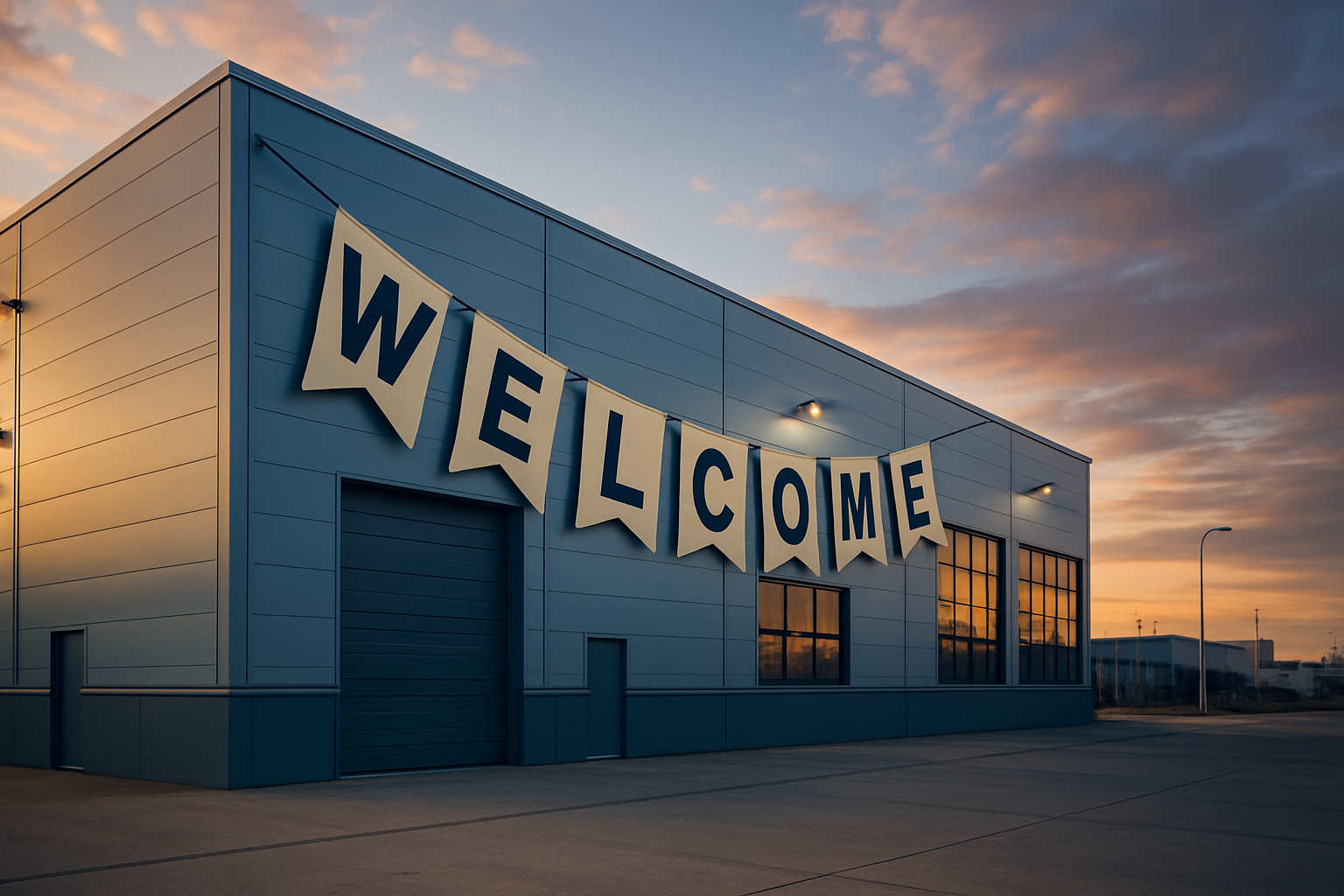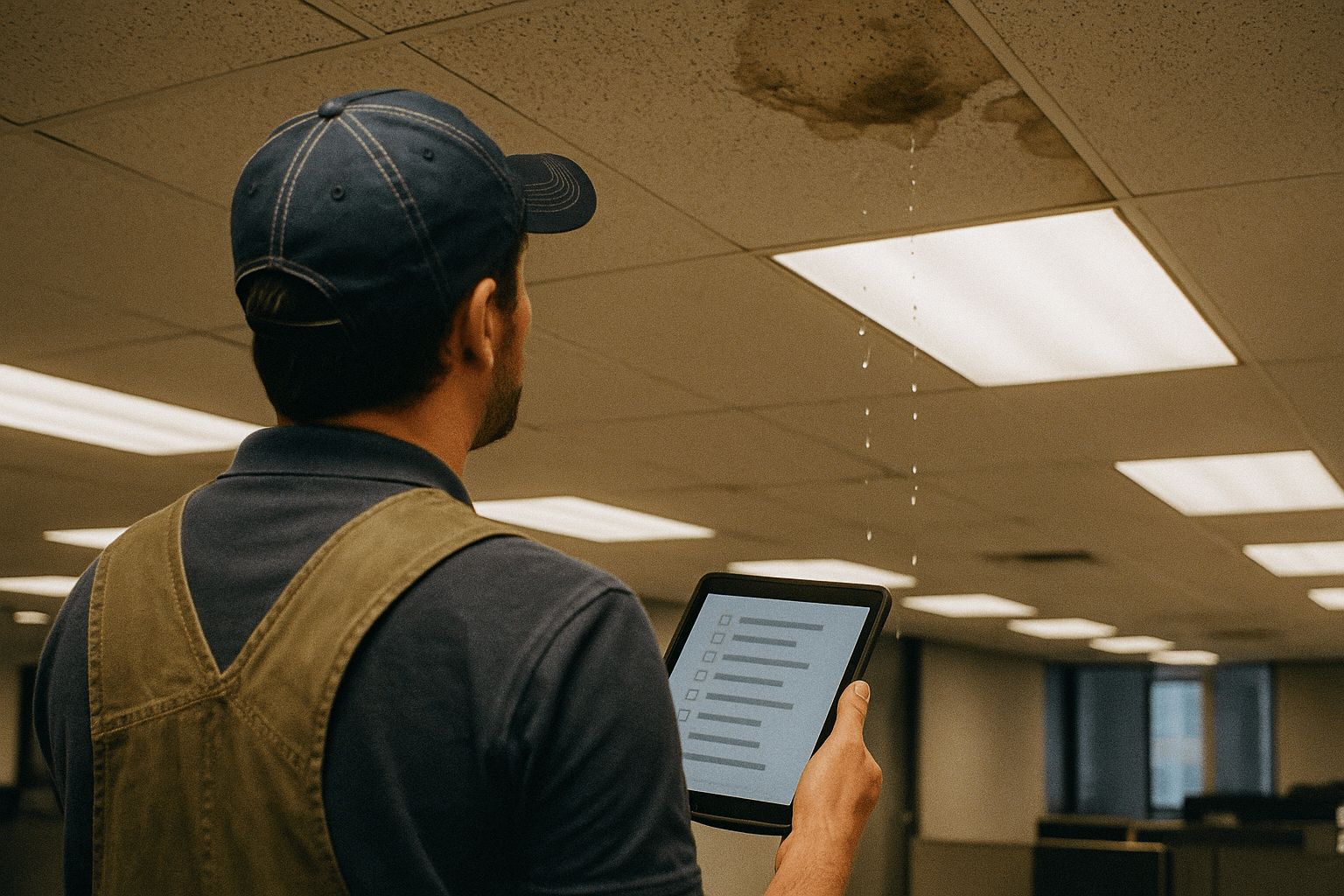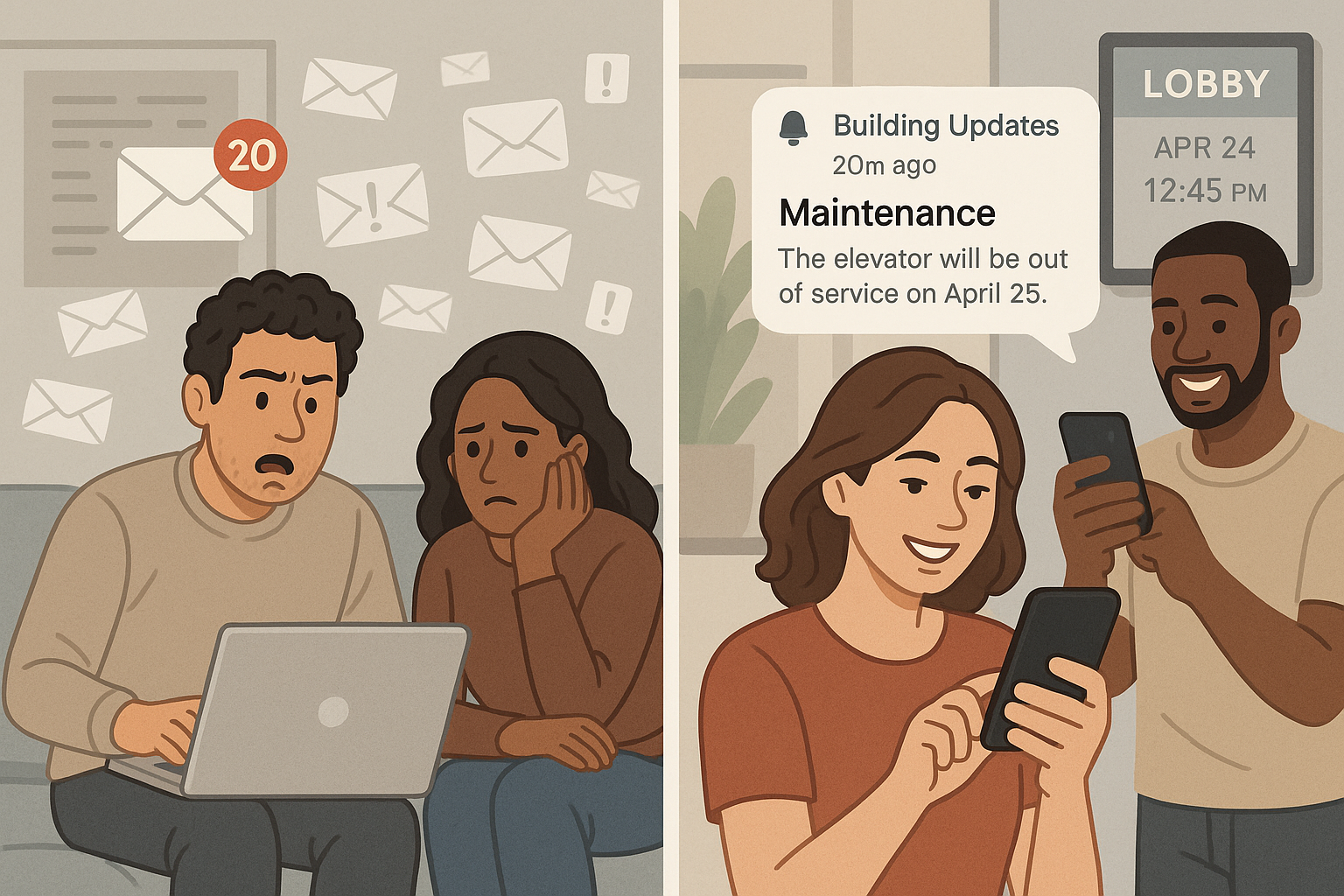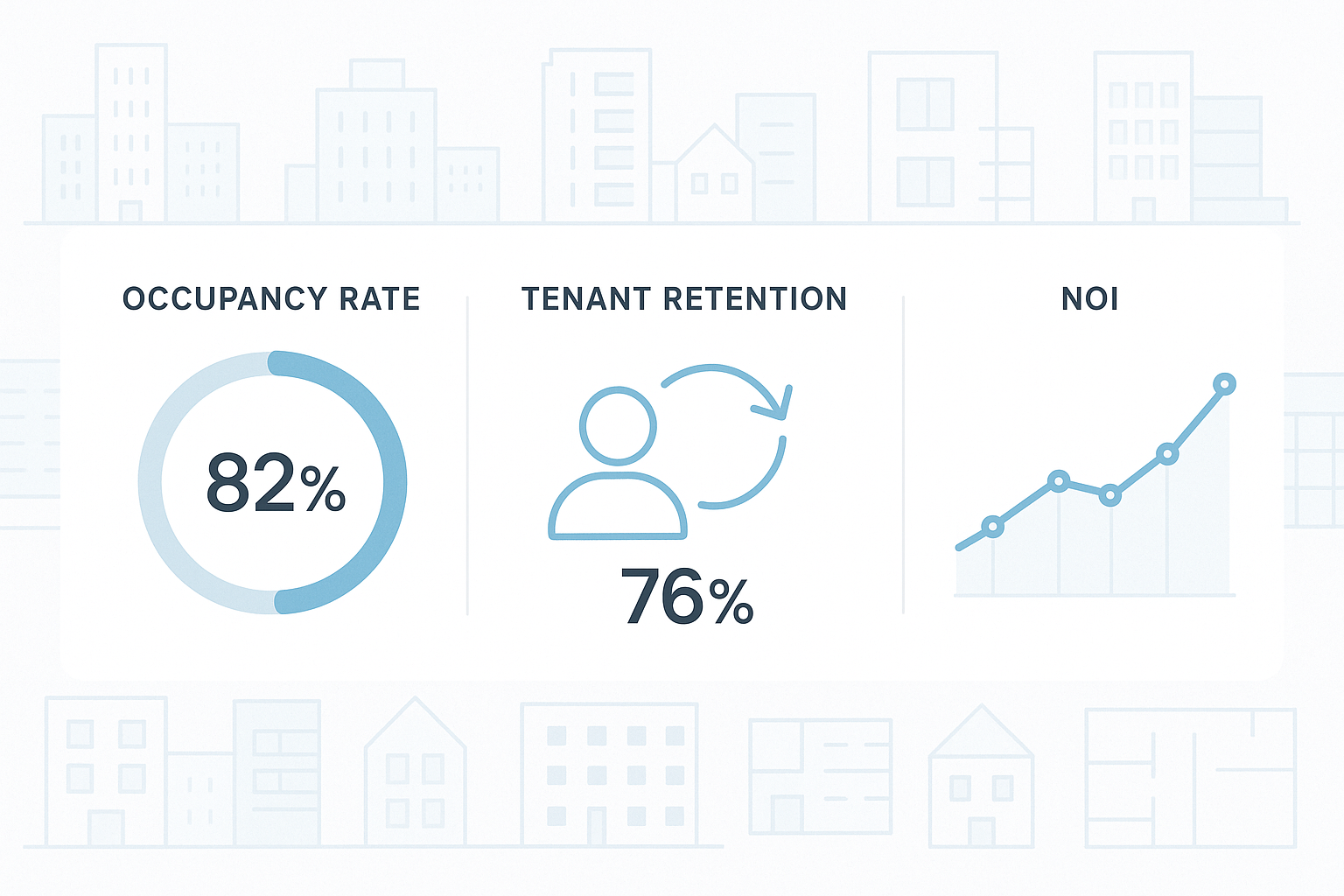Vacancy is the enemy of any commercial property owner. Having the right tenants in your industrial buildings can make the difference between success and failure. Good tenants provide steady rental income, take care of the space, and help preserve your property’s value. But finding (and keeping) these ideal industrial tenants can be challenging.
This guide breaks it down: how to identify the kind of tenant you want, how to market your space effectively, what to ask when someone applies, and how to write a lease that protects you without scaring people off. It also covers what happens after they move in—because keeping a good tenant matters just as much as finding one. The goal here is fewer vacancies, less hassle, and tenants who stick around.
What Makes a “Good” Industrial Tenant?
Not every business is the right fit for your warehouse or manufacturing space. A good industrial tenant is one that matches your property’s features, is financially reliable, and plans to stay for the long haul. Start by defining your ideal tenant profile. Consider the type of business that would thrive in your space and take good care of it. For example, if you have a distribution warehouse with loading docks and high ceilings, a logistics company or manufacturer might be an ideal match. Ensure the tenant’s operations align with your building’s zoning and capabilities (power supply, floor load capacity, access to highways, etc.).
Financial stability is paramount. Look for companies with proven financial health that can meet their lease obligations. You can request financial statements or credit reports to gauge this. A tenant with healthy finances and a track record of reliability is more likely to pay rent on time and handle any triple-net expenses (like maintenance or taxes) if those apply. Growth potential matters too – a growing business is more likely to stick around and even expand their lease over time.
In short, a “good” industrial tenant has the right business type for your facility, a stable financial footing, and a positive reputation. They communicate well, respect the property, and ideally see your building as a long-term home for their operations.
Effective Marketing Strategies to Attract Reliable Tenants
To fill an industrial vacancy with a strong tenant, you need a smart marketing plan. Start with making your property visible to the right people. List your available space on popular commercial real estate platforms (such as LoopNet or local CRE listing services) and include detailed information about the property. Industrial tenants have specific needs, so mention critical specs: total square footage, ceiling height, number of loading docks or bay doors, warehouse office space, power capacity, nearby highways or ports, and any special amenities. High-quality photos and even virtual tour videos are a must.
Hiring a professional photographer to showcase your building and its amenities can make a big difference – potential tenants won’t bother visiting if they can’t get a good impression online. Put your property’s best face forward in online listings, brochures, and email blasts by highlighting clean, well-lit images of the interior and exterior. If the space is currently empty, consider lightly staging certain areas or at least ensuring they’re spotless for photos. Don’t underestimate traditional marketing either. On-site signage can be very effective for industrial properties. If your building is in a visible location or industrial park, put up a clear “For Lease” sign on the property frontage
Include basic details (like space available and a contact number or website) so passing drivers or delivery trucks know the opportunity. You might also use direct mail or flyers targeted to local businesses that could use the space. Additionally, leverage digital marketing: advertise on social media platforms like LinkedIn or Facebook, targeting industries or business owners in your region. A short video tour or aerial drone footage of your facility shared online can catch the eye of a decision-maker scrolling through their feed.
Networking and word-of-mouth remain powerful tools for finding quality tenants. Spread the word through your personal and professional networks. Let local business owners, suppliers, and even your current tenants know that you have space available – they may refer someone. In fact, it’s wise to start with people you already know. A direct conversation with a supplier, a neighboring factory, or a friend in the local business community can lead to a tenant prospect faster than any cold call or listing site.
You might even consider contacting your local Chamber of Commerce or attending its meetings to meet business owners who are looking for space. Some owners set up referral programs, offering a small incentive or commission to anyone (including brokers or existing tenants) who refers a lead that signs a lease. The more channels you use to publicize your vacancy – online listings, signage, brokers, networking, and advertising – the wider your pool of potential tenants and the better your chance of finding a great match.
Another way to boost your property’s appeal during the marketing process is by showcasing the operational tools tenants will gain access to. Industrial tenants are increasingly drawn to buildings that offer modern, streamlined experiences—not just in layout and infrastructure, but in day-to-day functionality. Industrial property management software like Cove provides centralized oversight across building operations, work orders, and tenant communication, making it easier for tenants to get support, reserve loading docks, manage invoices, or track maintenance—all from one intuitive dashboard. Promoting this kind of integrated technology can set your building apart, showing prospects that you’re investing in long-term efficiency and a tenant-first experience. It also reassures them that they won’t be chasing down building managers or juggling disjointed systems. That added convenience can make your space the clear winner when a tenant is deciding between multiple options.
Thorough Screening and Due Diligence Steps
Attracting interest in your property is only half the battle – next comes screening those prospects carefully. It’s exciting to get an inquiry or tour scheduled, but you should never skip due diligence on a potential tenant. A thorough screening process helps you avoid costly problems down the road. Start by having interested tenants fill out an application or provide information about their business.
Key things to evaluate include:
- Financial strength: Review the company’s financial statements if available, or at least run a credit check to assess their credit history. You want assurance that they can afford the rent and will pay on time. Check if the business has consistent revenue and positive cash flow. For smaller businesses, you may want to secure a guarantee from the owners or a higher security deposit to mitigate risk.
- Business background and reputation: Dig into the tenant’s background. Who owns the business? Who’s actually running it day to day? Do a quick online search—you’re looking for any signs of trouble: lawsuits, evictions, even bad press or reviews from earlier locations. But don’t stop there. Reach out to former landlords if you can. Ask how things went. Did they pay on time? Take care of the space? Sometimes, one honest conversation tells you more than a stack of paperwork ever could.
- Use and operational needs: Ensure the tenant’s intended use of the space fits your building and complies with zoning and regulations. For example, if they plan to do light manufacturing, confirm that your building’s zoning allows it and that you have adequate utilities (power, water) for their operations. Check if any hazardous materials or heavy machinery will be involved and whether the tenant has the proper licenses and insurance for that. It’s better to address these upfront than to discover issues after signing a lease.
- Fit with your criteria: Revisit the ideal tenant profile you defined. Does this prospect match the size requirement and lease term you’re looking for? If you aim for, say, a stable mid-sized company, and you get interest from a very new startup, proceed with caution and extra screening. Sometimes a gut feeling based on experience can alert you to a mismatch or potential trouble, so don’t ignore warning signs like evasive answers or incomplete information.
Performing these due diligence steps will help you filter out risky tenants and confirm when you’ve found a gem. Various services can assist in vetting – for instance, commercial credit reporting agencies or background check services for businesses. The goal is to verify that the tenant is who they say they are, can pay the rent, and will be a responsible occupant. Yes, this takes time and maybe a bit of money, but bringing in the right tenant on the front end will save you from headaches (and financial losses) later. It’s far cheaper to prevent a problem tenant than to have to evict one or fix damage from one. In short, do your homework now to enjoy a smoother tenancy later.
Building Strong Landlord-Tenant Relationships
Finding a good tenant is only the beginning. To truly maximize your industrial investment, you want to keep that tenant happy and renew them for as long as possible. Building a positive, professional relationship with your tenants will go a long way toward ensuring they stick around. In fact, satisfied tenants are much more likely to renew their leases and even take better care of the property. It’s a win-win: they get a supportive place to do business, and you get a stable occupancy and steady income.
Communication is key. Don’t be a stranger once the lease is signed. Establish a communication routine to check in with your tenants periodically. This could be a quick monthly email or a phone call every quarter asking if everything is going well. By staying in touch, you show tenants that you care about their success and comfort in the building. Open lines of communication also make it more likely they’ll alert you to small issues before they become big problems. For example, if the tenant knows you’re responsive, they’ll tell you early about a minor roof leak or a malfunctioning loading door – which you can fix before it causes serious damage or disruption.
Be responsive and proactive in addressing maintenance and repairs. When a tenant reports a maintenance issue, jump on it quickly. Industrial tenants rely on the functionality of the space (imagine a broken bay door halting a day’s shipments – that’s urgent). By promptly resolving problems, you build goodwill and trust. Additionally, conduct preventative maintenance on the building’s major systems (HVAC, roof, fire sprinklers) and keep the property clean and secure. When tenants see that the landlord is proactive about property upkeep, they feel valued and tend to reciprocate with care and loyalty. A well-maintained facility not only keeps your current tenants satisfied, but also impresses them enough that they’ll want to stay long-term and possibly expand within your property.
One way to keep a good tenant around is to show them it’s worth staying. Maybe they’ve been solid for a few years—always on time with rent, no complaints. That might be the time to offer something small but meaningful: a fresh coat of paint, better lighting, a little upgrade that makes their space work better. It’s not about big giveaways—it’s about showing you notice and value the relationship. Some landlords provide small annual appreciation gifts or organize a tenant appreciation lunch – gestures that humanize the relationship beyond just rent collection. When renewal time comes, you can also be flexible with terms for a tenant that you want to keep. Maybe you can negotiate a slightly lower escalation rate or a few months of reduced rent if they sign an extension early.
Showing that you’re willing to work with them for mutual benefit creates a partnership mindset. Remember that small concerns can escalate if a tenant feels ignored, so always address issues fairly and promptly. If there is ever a dispute or misunderstanding, handle it professionally and seek a solution rather than letting bad blood fester. By being a supportive, communicative landlord, you make your tenants’ decision to stay an easy one. Long-term tenancies and word-of-mouth referrals often follow naturally from these strong relationships.
Avoiding Common Mistakes in Finding Tenants
Even seasoned property owners make mistakes when trying to fill a vacancy. Being aware of these common pitfalls can save you time, money, and headaches. One major mistake is rushing to fill the space with the first interested party without proper vetting. The pain of an empty building can tempt you to accept a tenant who doesn’t truly meet your criteria – this often backfires if the tenant turns out to be a late-payer, damages the property, or leaves after a short stint. Avoid this by sticking to a solid screening process (as described above) and not letting desperation overrule judgment. It’s better to endure a bit more vacancy than to sign a bad tenant who will cause bigger financial losses in the long run.
It’s easy to overlook the basics when listing a space—but they matter. Even if your building’s not supposed to be flashy, things like chipped paint, cracked pavement, or flickering lights send the wrong message. Tenants notice that stuff. If it looks like no one’s paying attention, they’ll wonder what else you’ve let slide. Poorly maintained or “rough around the edges” properties are unlikely to attract high-quality tenants. This mistake is easy to fix: before showing the space, handle any minor repairs and clean-up. Ensure the property is presentable – clean the floors, make sure the doors and gates function well, and maybe add a fresh coat of paint to the office area. First impressions count, even in warehouses. By demonstrating pride in your property, you set the expectation that the tenant should also take good care of it.
Perhaps the biggest mistake in the long term is failing to communicate with and understand your tenants. Some landlords sign the lease and then adopt a hands-off, distant approach. Then one day they’re surprised to find out a tenant is unhappy or planning to leave. In fact, many commercial managers who don’t spend enough time on tenant communication eventually find themselves facing unexpected vacancies and underperforming buildings. Don’t let that happen to you.
Stay engaged with your tenants (without micromanaging). If you maintain an open dialogue and respond to concerns, you can often address issues that might otherwise cause a tenant to start looking for a way out. Also, be mindful of your reputation; if you develop a name locally as an owner who is difficult or indifferent, good tenants may avoid your properties. Conversely, owners known for fairness and professionalism tend to attract referrals. Avoiding these mistakes – by being diligent in tenant selection, realistic in negotiations, attentive to property conditions, and responsive in management – will significantly improve your success in finding and keeping the right tenants for your industrial buildings.
Creating Long-Term Success with the Right Tenants
Getting someone in the door is one thing, finding the right tenant is something else entirely. The goal is to fill a vacancy and find someone who’s going to take care of the space, pay on time, and stick around. That starts with knowing what kind of tenant actually works for your building and making sure your listing speaks to them.
When you invest time and effort into supporting your tenants’ success, they invest in yours by renewing leases and taking care of your building. Commercial real estate is as much about relationships as it is about real estate. With clear communication, a well-kept property, and a fair approach, you’ll position yourself as a landlord of choice for industrial tenants. Over time, reducing turnover and vacancies becomes easier because your reputation for being a great partner will precede you. In the end, finding good industrial tenants is about creating win-win situations – a suitable space for them to thrive, and a reliable tenant for you to prosper. Implement these strategies with confidence, and you’ll fill those industrial spaces with tenants that help your investment reach its full potential.
Finding great tenants for your industrial properties is only half the battle—keeping them happy for the long term is the real key to success. Cove can help: Cove’s all-in-one commercial property management software combines property operations and tenant experience tools, helping you save time and enhance the building experience for your tenants. Ready to elevate your tenant retention strategy? Download our free 2025 Guide to Commercial Tenant Retention Strategies for proven tips to build stronger tenant loyalty, boost renewal rates, and future-proof your portfolio’s success.

.png)




